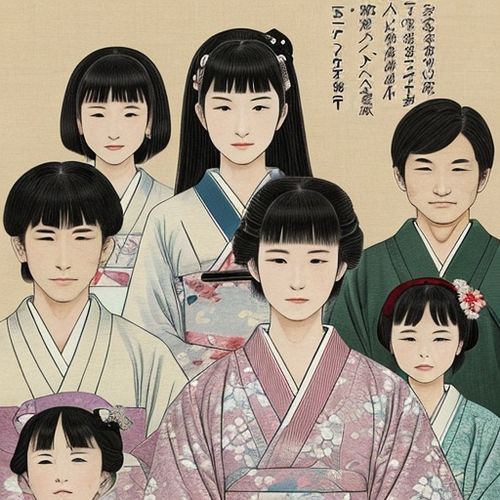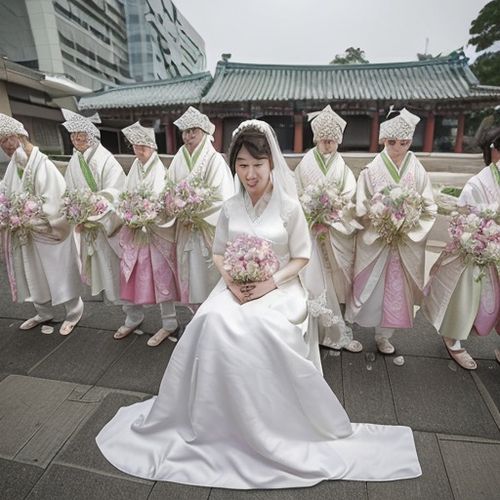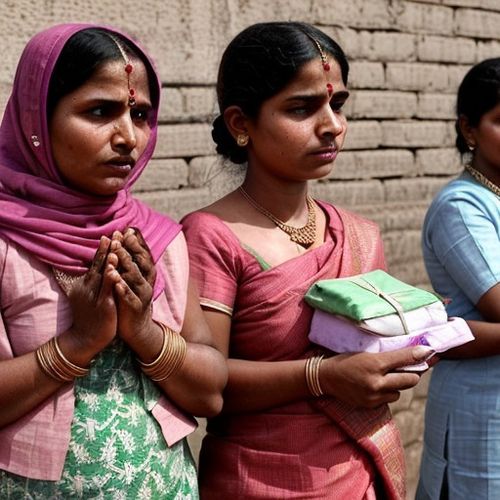The practice of dowry, deeply entrenched in Indian society for centuries, has long been a subject of both cultural significance and legal scrutiny. Despite the existence of the Dowry Prohibition Act since 1961, the custom persists in various forms across the country, often with devastating consequences. The law, which criminalizes the giving or receiving of dowry, was enacted to protect women from harassment and violence linked to dowry demands. However, its implementation has been fraught with challenges, revealing a complex interplay between tradition, gender inequality, and legal enforcement.
The origins of India's dowry system can be traced back to ancient times when it was considered a form of inheritance for daughters who had no claim to parental property. What began as a voluntary gift gradually transformed into a coercive demand, becoming a significant financial burden for families with daughters. The modern manifestation of this practice often involves extravagant cash payments, jewelry, household goods, and even real estate, placing immense pressure on brides' families. This systemic issue cuts across class and caste lines, affecting families from various socioeconomic backgrounds.
India's Dowry Prohibition Act represents one of the earliest legislative attempts to address this social evil. The law defines dowry as any property or valuable security given or agreed to be given in connection with marriage. It makes both giving and receiving dowry punishable offenses, with penalties including imprisonment and fines. Subsequent amendments have strengthened the act, including provisions for dowry-related deaths under Section 304B of the Indian Penal Code. These legal measures reflect the government's recognition of dowry as not just a social issue but a serious crime that undermines gender equality.
The gap between legislation and ground reality remains substantial. While the law exists on paper, enforcement has been inconsistent due to various factors. Social acceptance of dowry, even among educated urban populations, continues to undermine legal prohibitions. Many families disguise dowry as "gifts" given voluntarily, making it difficult to prove violations in court. Additionally, the deeply patriarchal nature of Indian society often results in underreporting of dowry demands, as families fear social stigma or broken marriage prospects for their daughters.
Dowry-related violence statistics paint a grim picture of the law's limited impact. The National Crime Records Bureau reports thousands of dowry deaths annually, with many more cases going unrecorded. These deaths, often disguised as kitchen accidents or suicides, highlight the extreme consequences of dowry demands. The creation of special cells in police stations and women's protection laws have attempted to address this, but conviction rates remain disappointingly low. Legal experts attribute this to lengthy court procedures, witness intimidation, and the difficulty of gathering evidence in domestic settings.
The economic dimensions of dowry prohibition cannot be overlooked. In a country where female workforce participation remains low, marriage is often seen as the primary "career path" for women, making families vulnerable to dowry demands. The commodification of brides, where education and fair complexion command higher "prices" in the marriage market, perpetuates the cycle. Some progressive families have begun celebrating "dowry-free" marriages, but these remain exceptions rather than the norm. Microfinance initiatives and women's education programs have shown promise in reducing dependence on the dowry system by empowering women economically.
Judicial interpretations of the dowry law have evolved over time, reflecting changing social attitudes. Courts have increasingly taken a strict view of dowry harassment cases, sometimes extending the definition of cruelty to include mental harassment. Landmark judgments have established that demand for dowry doesn't need to be limited to the period before marriage but can extend to any time after marriage. However, there have also been concerns about potential misuse of anti-dowry laws, with some cases being filed as leverage in marital disputes rather than genuine dowry harassment.
The role of education and awareness in combating the dowry system cannot be overstated. While legal measures provide necessary deterrence, lasting change requires transforming deep-seated social attitudes. Schools and colleges have begun incorporating gender sensitivity programs, and media campaigns have attempted to portray dowry-free marriages positively. Religious leaders from various faiths have spoken against the practice, emphasizing that no major religion endorses the coercive aspects of dowry. These efforts, combined with legal measures, represent a multi-pronged approach to eradicating this social evil.
Looking ahead, the effectiveness of India's dowry prohibition efforts will depend on several factors. Strengthening law enforcement mechanisms, improving conviction rates, and addressing procedural delays in courts are essential legal steps. Simultaneously, societal change must focus on women's economic empowerment, equal inheritance rights, and challenging patriarchal norms that sustain the dowry system. The growing influence of educated, financially independent women in urban areas offers hope for gradual change, though rural areas may take longer to transform. International human rights organizations continue to monitor India's progress in this area, recognizing that the dowry issue has implications for global gender equality efforts.
The persistence of dowry practices despite legal prohibition serves as a sobering reminder of how deeply cultural practices can resist legislative reform. India's experience highlights the complex relationship between law and social change, where legal measures alone cannot transform centuries-old traditions. The dowry prohibition journey reflects both the challenges of social reform in a diverse democracy and the resilience of patriarchal structures. As Indian society continues to modernize, the true test will be whether changing attitudes can finally render this ancient practice obsolete, fulfilling the promise of the decades-old prohibition law.

By Eric Ward/Apr 19, 2025

By Sophia Lewis/Apr 19, 2025

By George Bailey/Apr 19, 2025

By George Bailey/Apr 19, 2025

By Grace Cox/Apr 19, 2025

By Natalie Campbell/Apr 19, 2025

By Sarah Davis/Apr 19, 2025

By Michael Brown/Apr 19, 2025

By George Bailey/Apr 19, 2025

By Victoria Gonzalez/Apr 19, 2025

By Christopher Harris/Apr 19, 2025

By Natalie Campbell/Apr 19, 2025

By Sophia Lewis/Apr 19, 2025

By James Moore/Apr 19, 2025

By Natalie Campbell/Apr 19, 2025

By Emily Johnson/Apr 19, 2025

By James Moore/Apr 19, 2025

By Amanda Phillips/Apr 19, 2025

By Emily Johnson/Apr 19, 2025

By Noah Bell/Apr 19, 2025